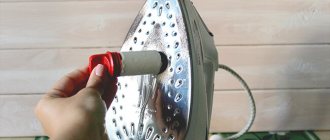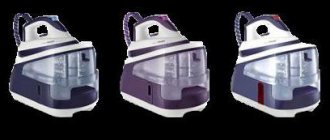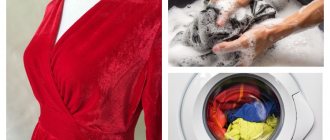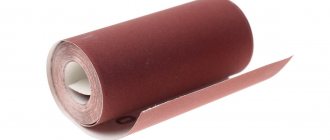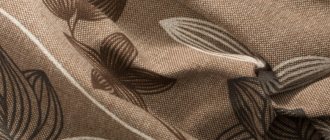Teflon coated iron: features and advantages
Teflon is a substance that has non-stick properties. Thanks to them, the iron easily glides over the fabric while ironing without sticking to it. This material conducts heat well, so folds are smoothed out efficiently, even without any effort. It is not destroyed by alkalis and acids, and is heat and frost resistant.
This coating has a significant disadvantage - it is easily damaged and scratches appear if handled carelessly. It requires careful care, gentle cleaning products and a safe storage place. However, even with proper cleaning and non-stick coating, violation of the temperature regime leads to the formation of soot.
Getting rid of limescale
Limescale deposits can form both on the soleplate of the iron and in the water tank. To protect the device from damage, you need to get rid of it.
“Antinakipin” copes well with this problem. It will remove deposits from the work surface and the liquid compartment. To do this, pour the product into the iron, turn on the maximum temperature setting and, holding the product in a vertical position, press the steam button. Apply steam at intervals of 10 seconds. When the product in the compartment runs out, iron the unnecessary item. Then do the same operation with clean water.
Before pouring Antiscale into the device, read the instructions for use from the manufacturer. It will indicate whether the cleaner needs to be diluted with water or not.
You can also get rid of scale using citric acid. The working process is the same as with the above-mentioned purchased drug.
How to clean a Teflon-coated iron from burning at home
If the sole of the equipment is dirty, it will glide worse on the fabric, synthetics will begin to stick, and the folds will no longer be smoothed out. Since the material is resistant to chemical attack, you can clean a Teflon-coated iron with almost any product designed for this purpose. The only limitation will be the cleaning tool. For example, you should not rub the surface with hard abrasive materials, an iron sponge or brush, or scrape off burnt marks with a knife.
It is also important to know how to work with the cleaner to get the desired result. Some substances only work under certain conditions, but may be ineffective if used incorrectly.
Special chemicals
Store-bought cleaners are made to work on aluminum, ceramic, Teflon and even steel irons without damaging all of these materials equally. Pencils cope with heavy stains when available tools are not enough. To treat the surface you need to follow the instructions:
- Heat the iron to medium temperature on the dial.
- Holding the pencil perpendicular to the sole, move it over the contaminated areas. It will begin to melt, dissolving the scorch marks.
- Wipe the iron with a soft cloth.
- Iron the unwanted piece of material with steam, pressing the steam button to clean the holes.
Residues of the cleaner can be wiped off with a damp cloth after it has cooled.
Using materials at hand
If you need equipment urgently, but there are no commercial cleaning products at home, you can use what you have in the kitchen or bathroom. You can clean a Teflon-coated iron without using professional cleaners. Acids and alkalis work with this type of pollution if they are used in the right concentration. It's best to clean your iron immediately after it burns, as the cumulative effect of several ironings will harden the stains. They will dissolve worse, and plaque spots that do not come off will damage the clothes.
Lemon acid
Citric acid is a natural oxidizing agent that gently cleans surfaces.
It must be dissolved in the correct concentration for it to work:
- Heat a glass of water to almost boiling.
- Dissolve 1 tablespoon of citric acid in it.
- Prepare a soft cloth, preferably flannel, and soak it in the solution.
- Wipe the surface of the iron, preheating it to one or the “silk” value.
- Wash off any remaining acid with warm water. Iron the unwanted fabric with steam.
If the stains do not come off immediately, you can moisten them with acid and leave them for a couple of minutes, repeating this procedure several times. It's best to soak them when the iron is a little warm.
Vinegar
You can clean the Teflon soleplate of your iron from carbon deposits at home using vinegar:
- Table vinegar does not need to be diluted with water, since this is a solution with a concentration of 5 to 9%.
- Moisten a cotton pad with it and wipe the soleplate of the iron.
- If the carbon deposits do not come off, you can leave the cotton pads with vinegar on the iron for 10-15 minutes, allowing the acid to act.
- Wash off any residue from the surface with clean water.
In addition to external cleaning, vinegar helps remove scale from the steam vents. To do this, you need to dilute the liquid a little and pour it into the water compartment. Turn on the iron and press the steam button until the scale comes out. Do the same with clean water.
Hydrogen peroxide
Pharmacies sell hydrogen peroxide with a concentration of 3%.
It is quite enough to dissolve a thin layer of plaque on the work surface:
- Moisten a piece of cloth or cotton wool generously with hydrogen peroxide.
- Wipe the cold work surface, paying attention to burnt areas.
- Drop a little peroxide onto the stain and leave it for a few minutes if it doesn't rub off well.
- Wipe everything with a clean damp cloth, preventing streaks.
You must work with a cold iron, otherwise the peroxide will quickly evaporate and will not have time to act. It is better to let the solvent sit for a few minutes.
Toothpaste
Toothpaste easily dissolves plaque from staining foods and drinks and copes with household stains:
- Apply a small pea of paste to a damp soft brush.
- Preheat the iron to minimum temperature.
- Distribute the paste over the sole, rub lightly, foaming it.
- When the stains dissolve, wipe off the foam and dirt with a clean napkin. Repeat wiping with a damp cloth several times, as a lot of soap residue may remain.
You should use simple toothpaste, without abrasive whitening particles and crumbs, so as not to scratch the Teflon. Otherwise, its composition will not harm the non-stick coating, so you can use the cheapest option.
Laundry soap
This cleaning product is used in laundry, cleaning and even for cosmetic purposes:
- To obtain a homogeneous soap solution or to evenly distribute the product over the surface, the laundry soap must be grated on a fine grater.
- Pour the shavings onto the fabric.
- Heat the iron to minimum temperature.
- Iron the fabric with soap until it dissolves on the sole and acts on the plaque.
- Wipe everything with a damp cloth several times.
You can also rub a warm iron with a bar of soap, heat it up more so that the soap melts and works, and then rinse it off. This method will only help with fresh stains of burnt synthetic fabric.
Paraffin candle
If you don’t have a special pencil, but the iron needs to be cleaned, you can save the Teflon sole of the iron from carbon deposits at home with paraffin:
- With a paraffin candle, you will have to heat the iron to maximum temperature and take a long piece of the candle so as not to damage your fingers.
- Wrap the edge of the candle with a napkin and, holding it, rub the sole with paraffin. It is better to do this over paper or newspaper so that the candle drips there.
- It is important to bypass the steam holes, as they will become clogged and the paraffin will no longer be removed from there.
- When the burnt material melts along with the paraffin, remove everything with a napkin from the now cooled equipment.
Keeping the surface parallel to the floor while cleaning will reduce the chance of your iron clogging.
Special blades
In addition to chemical removal, mechanical removal using gentle tools is also effective. Teflon is the least damaging to the material itself. There are special blades for equipment made from this plastic:
- Heat the iron to maximum temperature, wait a couple of minutes until the burnt spots begin to melt.
- Remove dirt with a cold spatula.
- Wipe the spatula and let it cool. Repeat until the sole is clean.
It is necessary to keep the spatula cold so that it collects the melted synthetic material. Otherwise, it will create streaks and leave dirt in place.
Foil
For this method, you will need a smooth and solid piece of foil without creases so that they do not scratch the Teflon. The foil will heat up and collect the burnt fabric:
- Place the foil on a flat, hard surface.
- Heat the iron to medium temperature. If it doesn't work, heat it up to maximum.
- Iron the foil.
Foil that is too thin may start to melt, so it is better to use a durable one that is suitable for baking in the oven. This works best on fresh stains.
We wash stainless steel and aluminum appliances
Aluminum irons can heat up quickly and cool down just as quickly. The material is delicate, so it must be handled with care. The resulting mechanical damage and scratches will collect small hairs from fabrics, which will darken and burn under the influence of high temperatures. As a result, the sole will become dirty and sticky.
You can clean such a surface with ammonia, citric acid or vinegar. But the acid may leave rough spots.
The metal surface can be cleaned of carbon deposits using a knife. But you should work carefully so as not to damage the sole.
Another effective method is cleaning with salt. Take a small piece of cloth or newspaper, sprinkle a thin layer of fine salt on it and iron it with a hot iron. Salt can be replaced with slightly moistened soda.
Burnt synthetics can be removed with nail polish remover.
The titanium soleplate is very easy to clean. To do this, let the device cool and wipe it with a damp cloth. But such products take a long time to heat up and do not retain heat well.
How to remove a scratch on the Teflon surface of an iron
Scratches on Teflon can vary in depth. If the scratch is not through, it will not cause much harm. As long as the integrity of the surface is maintained, it will protect things from burning.
If metal is visible under the Teflon layer, such a scratch will gradually destroy the protective layer around it, and therefore the iron will become unusable. Nothing can be done to repair such damage, since fluoroplastic is a toxic substance that is used only in production. Therefore, careful handling will be the best prevention of scratches on equipment.
Using vinegar and ammonia
If you think that you will not be able to clean the rusty soleplate of your iron and you will have to buy new equipment, then you are very mistaken.
Certain secrets will help you get rid of rust today. The main thing is to follow the basic safety rules when handling the iron, and soon it will delight you with a perfectly smooth surface. So, the first way to descale a Teflon sole is to use ammonia, vinegar, table salt and paraffin. If rust begins to accumulate in the nozzles of household appliances, moisten a small piece of cloth with vinegar or ammonia and wipe the soleplate of the household appliance. Afterwards, take a clean cloth, soak it in vinegar again, but iron it on top with an iron at the highest power. This should release a lot of steam, so be extremely careful.
If you don’t have vinegar or alcohol at home, sprinkle the fabric with fine table salt and pour a little water on top of it.
Now set the iron to maximum setting and run it through the fabric for 2 minutes. Clogged steam holes can be cleaned with the same table bite. Pour 2 tablespoons of liquid into the water container and turn on the device at “all”. After all the vinegar has evaporated, pour plain water into the same container and wait for it to evaporate again.
How to clean a Teflon-coated iron from synthetic deposits
Other solvents will also help you clean the Teflon soleplate of your iron from carbon deposits at home:
- Baking soda. It consists of small sharp grains, so it must be dissolved in water in high concentration. Wipe the sole with the mixture, leave wet wipes or cotton wool with baking soda on the stain so that it has a better effect. Wipe off with warm water.
- Nail polish remover. It works with a thin layer of burnt synthetics. It is enough to wipe the cold surface with a cotton pad with liquid.
All of the above products are also suitable; they remove carbon deposits from any type of fabric.
Pencil for Teflon iron sole
In order to clean the surface of a Teflon-coated iron from carbon deposits, the easiest way is to use a special cleaning pencil. It can always be found in any hardware store. It is important to pay attention to the instructions for use, which brands of irons (Tefal, Brown, Mulinex, etc.) and what types of sole coatings (Teflon, ceramics, aluminum, titanium) this product is suitable for.
Cleaning steps:
- heat the iron;
- melt the pencil on the soleplate, avoiding the molten material getting into the steam holes;
- Cool the iron slightly and carefully wipe the soleplate with a soft cloth (for example, flannel).
Vinegar
If the steam holes on the iron become clogged with scale, then you need to resort to vinegar.
Cleaning steps:
- Soak a soft cloth or gauze in the vinegar solution and clean the surface with it.
- Then thoroughly moisten a piece of cloth or gauze in the vinegar solution. Place on an ironing board and iron at maximum heating power. This procedure produces a lot of hot steam, so care is recommended to avoid burns.
Simple ironing rules
Prevention is easier than cure, so following proper ironing rules will help prevent the problem from recurring in the future.
- Follow the instructions on the clothing label. On any item it is written what material it is made of and at what temperature it can be ironed. Strict adherence will eliminate the possibility of burning.
- An item that wrinkles easily and has a low temperature threshold can be ironed through damp gauze. This will speed up the removal of wrinkles and reduce contact with clothing.
Maintenance of the iron should be timely, then carbon deposits will be easy to remove.
Hydroperite and wooden spatula
You can clean the Teflon coating of a household appliance using hydroperite.
To do this, dilute 2 tablets of the substance in 100 ml of warm water and pour the resulting solution into the water container on your iron. Turn on full power and iron any fabric you don’t need for 10 minutes. Afterwards, wipe the soleplate of the iron with a dry cloth and fill the container with plain water again. Wait for complete evaporation and wipe the surface of the household appliance with a dry cloth. Leave the iron to dry for several hours and then you can use it with pleasure.
If you do not want to use “chemistry” to remove melted pieces of fabric and polyethylene, then you can use a regular wooden stick or a kitchen spatula to remove burnt materials. Afterwards, you will need to heat the iron at full power and run it over clean fabric.
Nail polish remover, candle paraffin
In cases where overheating of the sole has led to the surface of the iron being damaged by burnt fabric (in most cases this happens when ironing synthetic products), you need to do the following as quickly as possible:
- Cool the device.
- Apply nail polish remover to a soft cloth or cotton pad.
- Wipe the sole thoroughly.
If this method fails to get rid of traces of soot, you need to prepare a paraffin candle and fine salt.
- the paraffin candle is grated on a fine grater, 10–15 grams of fine salt are poured into the resulting shavings;
- prepare two pieces of gauze fabric;
- spread the paraffin-salt mixture between two layers of gauze;
- set the iron temperature regulator to medium and iron the fabric;
- After 10 minutes, treat the soleplate of the iron with a cotton pad or soft cloth soaked in vinegar.
Under no circumstances should knives, files or other sharp objects be used to clean the soles of carbon deposits. This will lead to immediate damage to the Teflon coating. Another tip for cleaning an iron with regular table salt does not apply to Teflon! The edges of the salt crystals can cause scratches on the sole.
In the store you need to purchase nail polish remover without acetone. This liquid will also help clean the iron at home.
A cotton pad is thoroughly soaked in the product and applied to areas of severe burning. Simply wipe the dirty area. If the burning is severe, you can leave the cotton pad on for a couple of minutes.
After cleaning, wipe the sole of the electrical appliance with a damp cloth.
